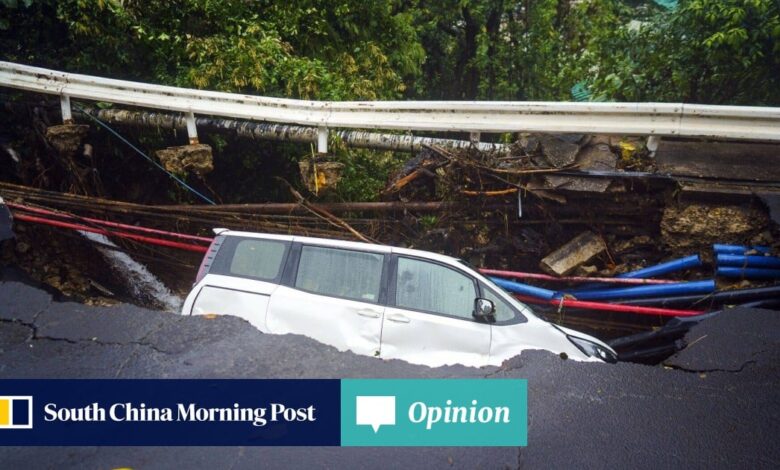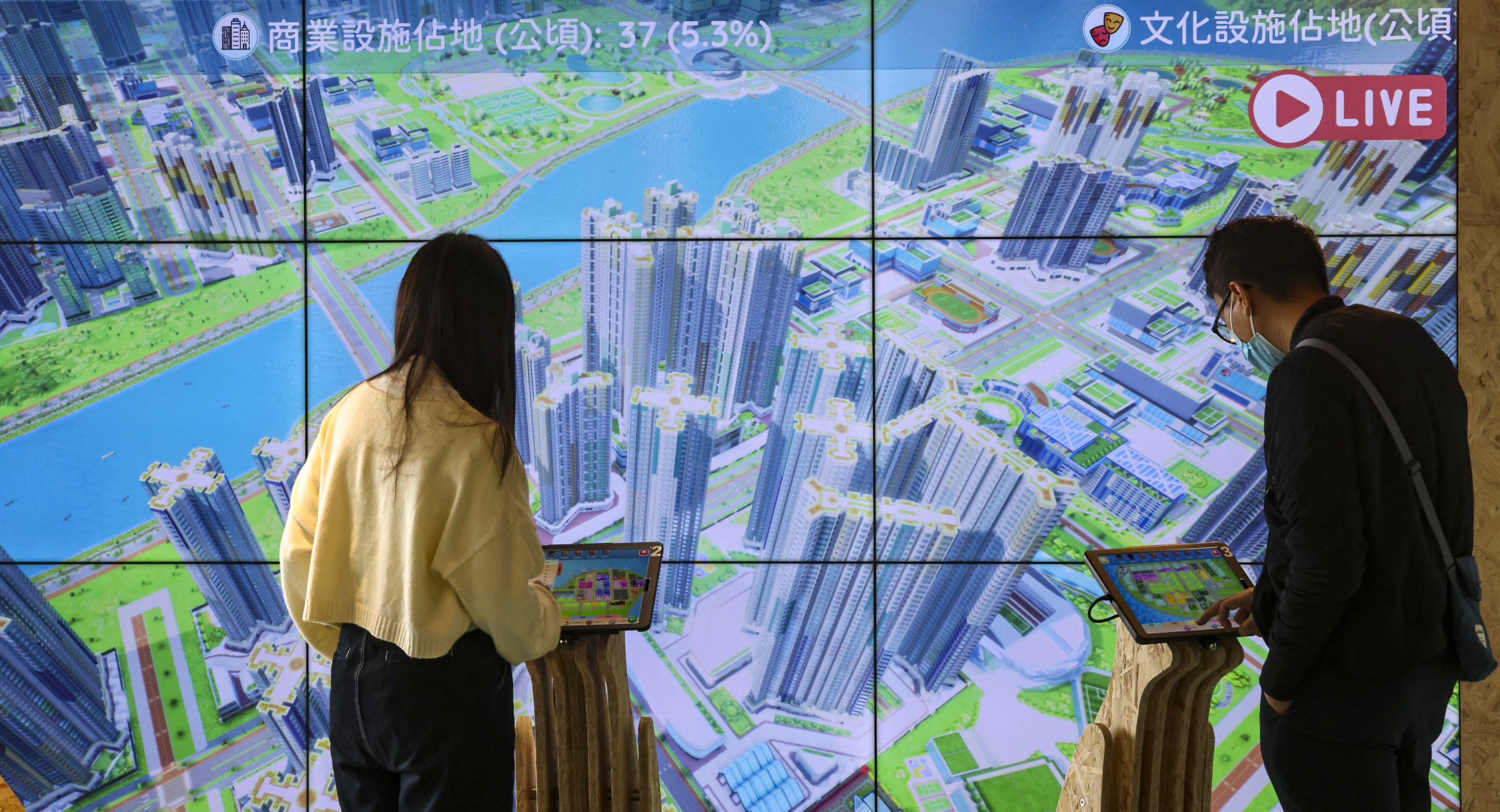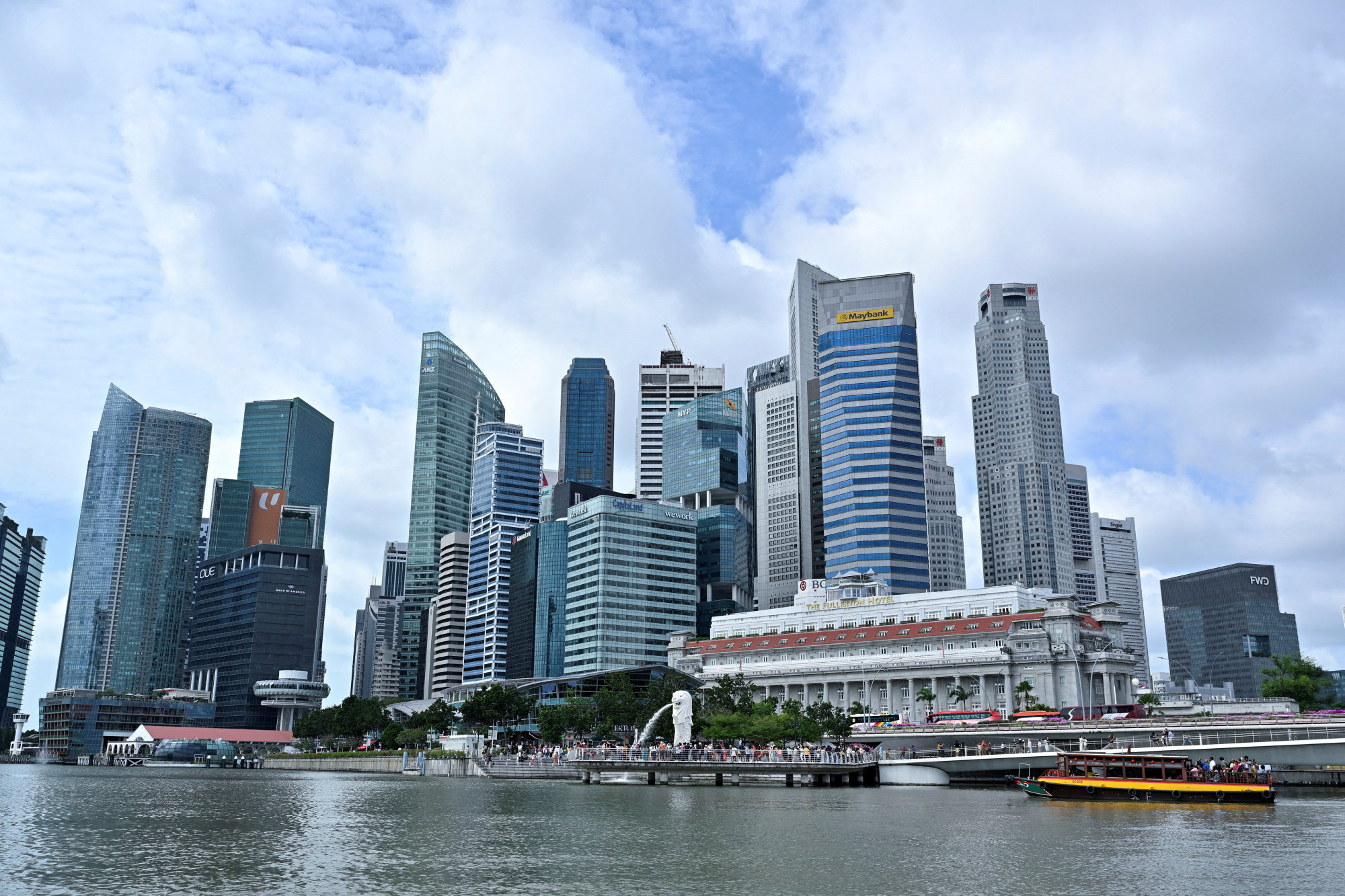Opinion | How Hong Kong can best build urban climate resilience

[ad_1]
To construct a more climate-resilient urban environment, Hong Kong must review and improve its approach to addressing extreme weather events. The most significant deficiency in Hong Kong society, as revealed by recent extreme events, lies in its lack of robustness, and a forward-thinking and reflective mindset.
Robustness refers to the capacity of infrastructure and people to withstand the impact of extreme circumstances. During the black rainstorm earlier this month, some MTR stations, malls and streets were flooded for an extended period. This shows the inadequacies of our infrastructure design and drainage systems.
We should upgrade them, and consider preventive measures such as floodgates in our subways, and innovations such as permeable pavements and other nature-based solutions.
The government should issue guidelines to educate people on how to protect themselves in extreme weather and establish statutory orders to safeguard workers’ safety. Technologies should be used to disseminate information and track the situation in real time.
Being forward-thinking entails having plans in place that can cope with changing conditions. Relying solely on observations from historical climatic data is no longer sufficient.

The government should review the building codes of existing and new buildings, ensuring they can withstand more extreme weather. But, as users of infrastructure and technologies, people are at the heart of the issue. Climate resilience should be part of compulsory education, covering action to take during extreme events and ways to minimise damage, as well as addressing the cause of climate change by reducing individual carbon footprints.
And rather than wait for government workers to clear branches blocking roads, perhaps we could collaborate with neighbours to move the obstructions where possible.
Finally, Hong Kong should ensure sufficient funds for its climate mitigation and adaptation measures. In the chief executive’s policy address in 2021, the government pledged to spend HK$240 billion over the next 15-20 years on these measures. But there have been few updates since then.

In New York City, meanwhile, maps showcasing stormwater flooding scenarios under the impact of future sea level rises are made available to the public for awareness and action.
Living in cities often leads to a disconnection from nature, resulting in a lack of awareness of the urban landscape’s vulnerability to natural disasters. Technology alone cannot solve all challenges, as the variability of natural systems and processes cannot be accurately forecast even with advanced climate science.
Therefore, our emphasis should be on building urban climate resilience by enhancing robustness, reflecting on past experiences, and adopting a forward-thinking approach.
Natalie Chung Sum Yue is a member of the Council for Carbon Neutrality and Sustainable Development
[ad_2]
Source link





